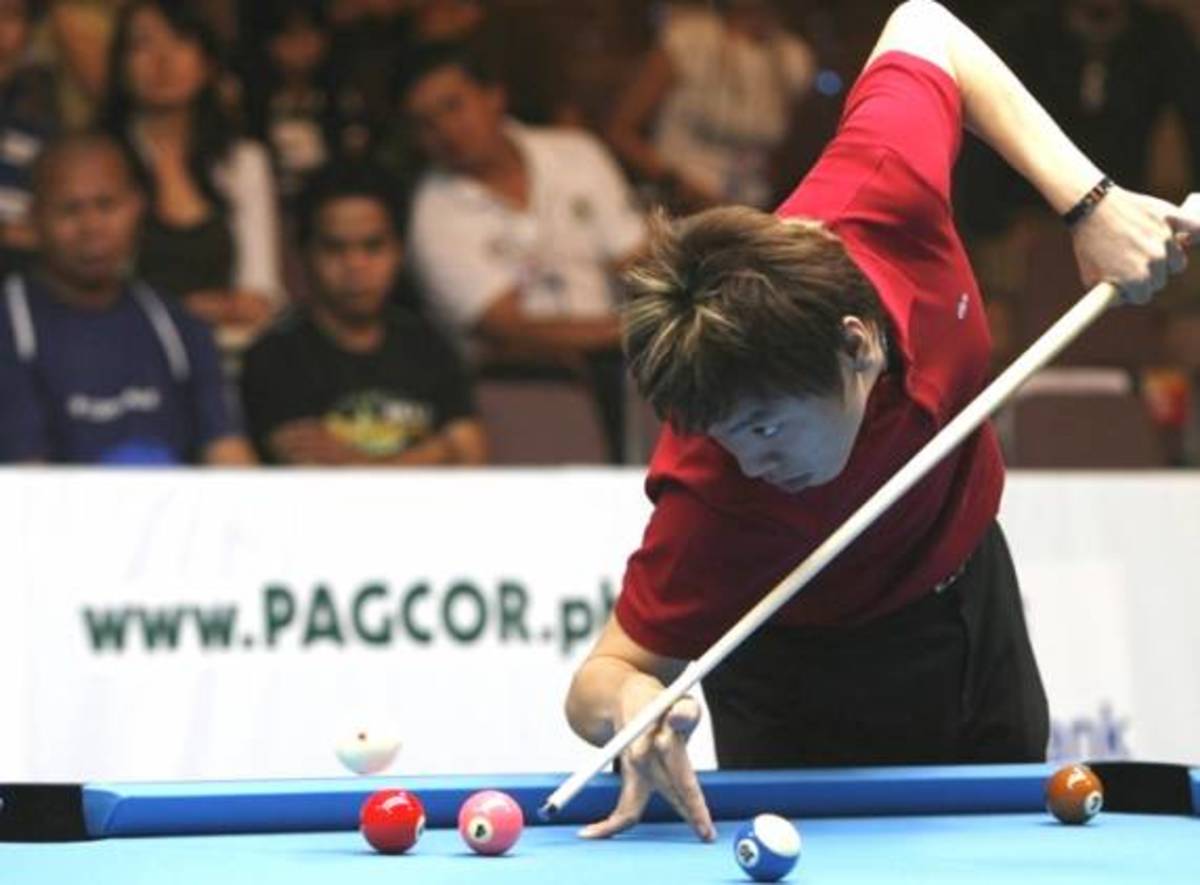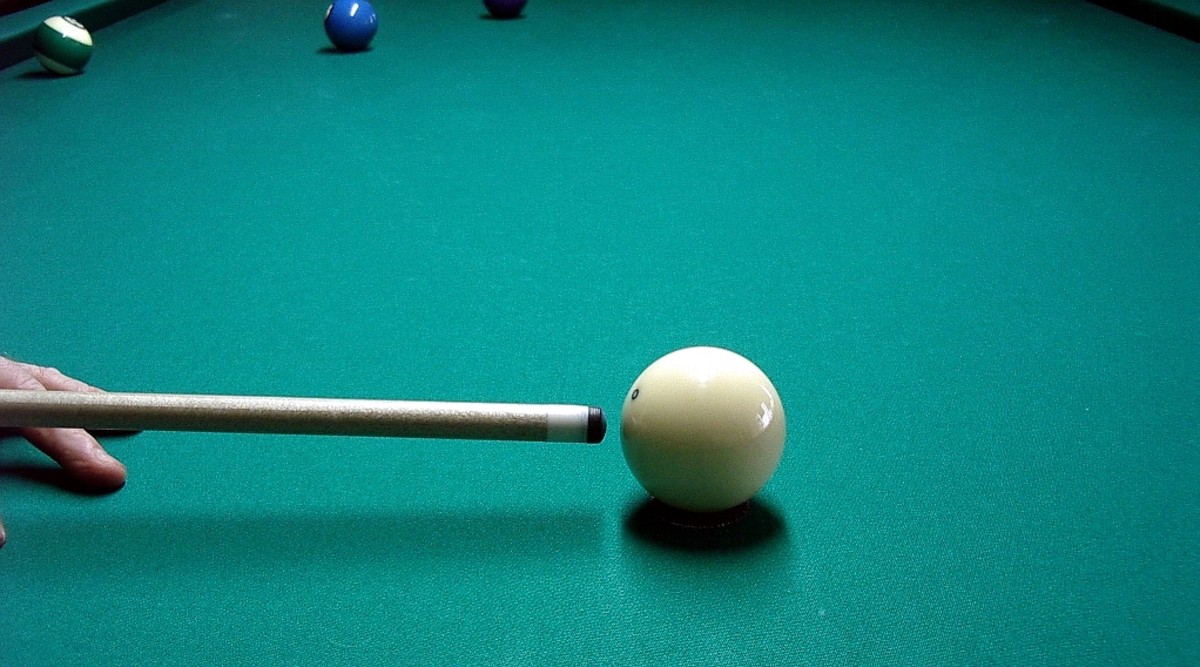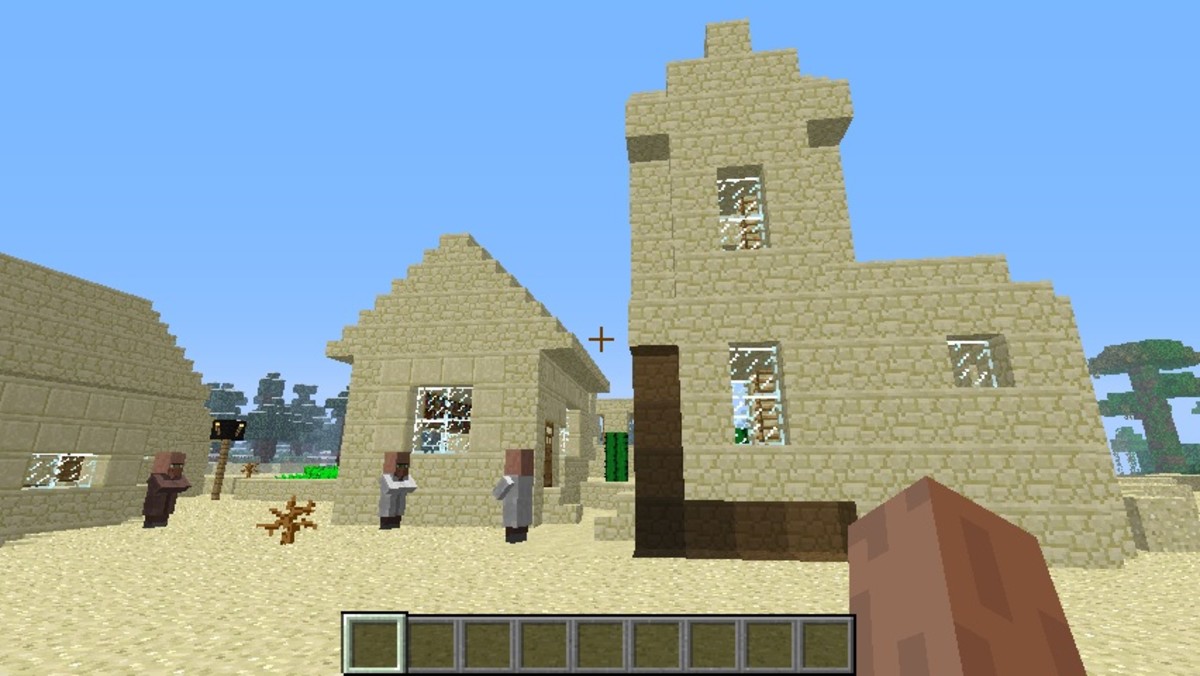Breaking the Rack in Pool (8-Ball); the Thinking Man's Game
What is the 'break' and what is it for?
If you compare 8-Ball and 9-Ball to other table games; 8-Ball can be compared to Chess and is the Thinking Man's Game. 9-Ball, however, is for when things are going your way, and is the Lucky Man's Game.
The break itself is a method of scattering the balls without there being any favouritism. It’s similar to the ‘Face-off’ in ice hockey or the ‘kick-off’ in soccer. And if it wasn’t for the fact that the pool ball only travels at approximately 24 mph during a break, you could compare it to a 200 mph Formula 1 qualifying race.
The break consists of the player hitting the cue ball from behind the head-line towards the racked-up balls. As explained in the previous entry, the Headline (sometimes called the Headstring) is an imaginary line between the second diamond spots up from the head cushion. The cue ball has to be hit hard enough to scatter the racked-up balls. The cue ball does not have to hit any particular ball in the rack. It can hit the ball at the apex of the pyramid or anywhere on either side. The cue ball can even be bounced off the foot cushion and angled up to hit the triangle from the back.Photo 1.
The person who has to break in pool is selected by playing either two practice games; flipping a coin or ‘lagging.’
In the two practice game method, the winner of the second practice game is normally given the privilege of ‘breaking’.
When it comes to ‘flipping the coin’ system, it is naturally the one who calls the correct side who has the privilege.
Lagging is an older arrangement of choosing the breaker; both players stand at the head of the table and simultaneously strike a ball to the opposite end of the table. The balls must strike the foot cushion and bounce back towards them; the player whose ball rolls back towards the head rail and comes to rest closest to it, even after bouncing off it, has the privilege of breaking - in other words the one that doesn’t lag behind.
The above three systems are the most normally used, and it has become accepted that the ‘winner’ gets the privilege of breaking. In reality the winner has the privilege of ‘deciding whether or not to break first.’ If you are a beginner, this seemingly inconsequential fact won’t matter to you; however do store it in the recesses of your memory for when you become more proficient.
At the start of a game, to make sure that the balls are really scattered, 4 out of the 15 balls must hit a cushion. This rule is to prevent a player from only touching the triangle of balls and leaving then in practically the same position, thereby forcing the opposing player to scatter the balls. Photo 2.
The break itself can be most important, because if a ball is pocketed (other than the cue ball or the 8-ball), the breaking player has the next stroke. Photo 3. In this instance the breaking player has made a good, clean break and not only that, has sunk the (1) ball. This means that the breaking player has the next shot but does not need to play low balls just because a solid went in.
As the ball went in off the break, the table is still ‘open,’ - he can choose either high or low balls….and, if he misses the next shot the game is still ‘open’ and the opposing player can play either solids or stripes.
If no balls are pocketed from the break, the opposing player has the next stroke. You can see from these rules, how important the break can be – especially in some derivations of the game of pool – as a proficient player can clear the table without giving you a hope in hell of even sniffing a ball.
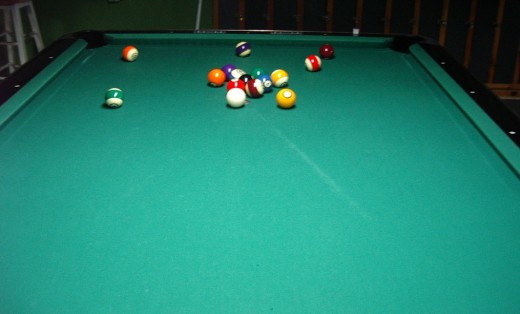
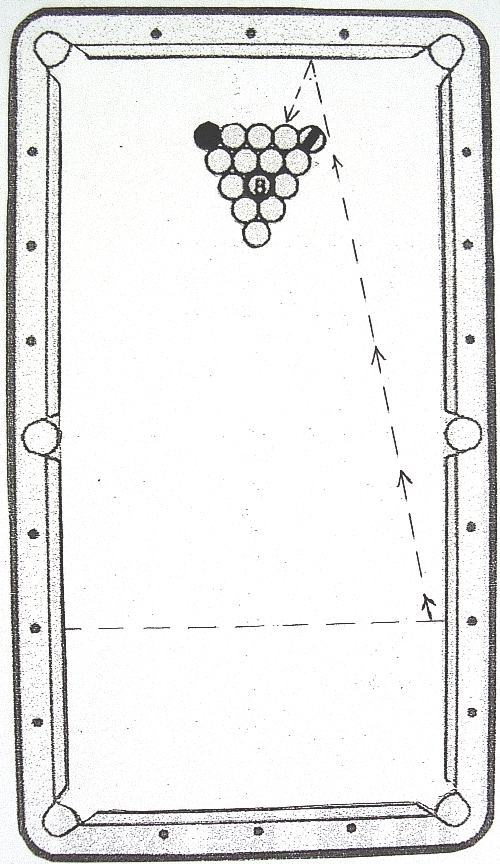
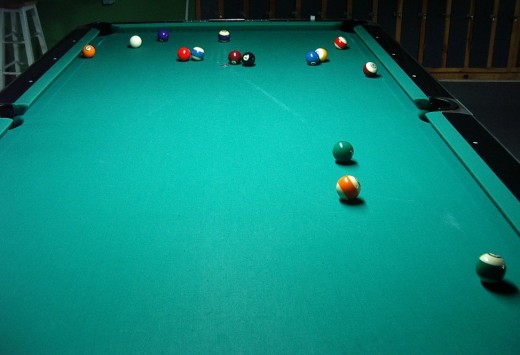
A Heavier or Lighter Breaking Cue?
18 ounces or 21 ounces?
Most proficient players, when they set up at a pool table for the beginning of a match, unlock their locker and take out their cues. Please note: - cues, not cue. They have their ‘playing’ cue and their ‘breaking’ cue.
What’s the difference? The playing cue is for playing the game with; it is capable of being stroked gently or firmly. The breaking cue only has to make one stroke – a hefty wallop of a stroke that’ll break the rack and spread the balls fairly. The only snag with that single stroke is that it can damage the tip of the cue; which is why there is a breaking cue. It makes no sense to use your playing cue to break and then have to repair the tip after every break. it is simpler to use a separate cue.
[Some players have three cues, their playing & breaking cues + their Sunday best ‘sniper’ cues that they keep for very fine work.]
Because of the force imparted, I assumed that the breaking cues would be heavier than the playing cues, but I was quickly disabused of this idea. The pool hall owner put me straight, when I asked him how much heavier his breaking cue was.
He shook his head at me. ‘Hitting the ball with a heavier cue isn’t going to make it go any faster; all it’s going to do is give me a sore arm. It isn’t the weight that drives the cue ball faster; it’s the speed of the stroke.’
When he saw the bewildered expression on my face, he sighed, ushered me to an empty table and racked the balls. ‘If you took a wooden baseball bat and hit a few balls with it and then changed to a heavier bat, all that would happen is that your arms would get tired sooner, unless you had become heavier and stronger. The amount of extra energy required to swing the baseball bat would eat up any extra distance or speed. It isn’t weight that moves the ball faster – it is the speed of the bat’s travel. It is the same with pool.’ He demonstrated by making a perfect break.
I nodded, ‘Ah! So when I’m playing tennis, I’m wrong when I think a heavier racquet will…………’
The owner waved me to silence, ‘Whoa! Whoa! Who’s talking about tennis? You can’t compare baseball bats with tennis racquets; racquets can be strung differently. You can’t even compare golf clubs or hockey sticks, as they have a built in flexibility.’
‘Baseball bats and pool cues can be compared; they are simply lumps of wood, OK?’ He ignored the gasps and calls of ‘sacrilege’ from the other tables as he continued with my lesson.
‘Any advantage a heavier cue might give you would be eaten up by the energy needed to use it. Apart from that, there is no evidence that a heavier cue will drive a ball any faster than the normal 25 mph during a break. The only possibility is that the ‘follow through’ of the heavier cue might create a faster speed.’
I watched mesmerized, as the owner continued to break the rack perfectly time after time. As he did so, he finished that part of my lesson –
‘Much as I believe in keeping my head down and following through, I believe more in using a lighter, faster, cue for breaking, working on the principal that a lighter cue can be stroked faster and it is speed that needs to be transferred, not weight.’
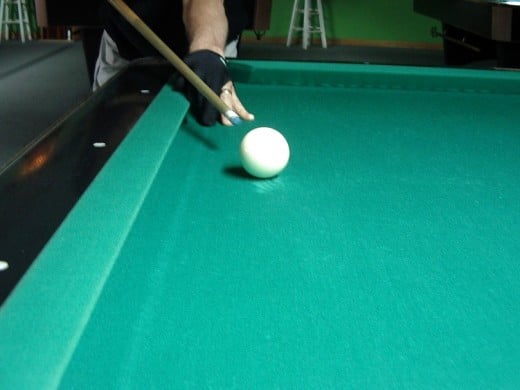
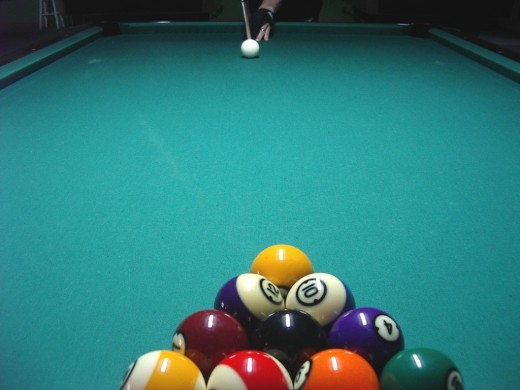
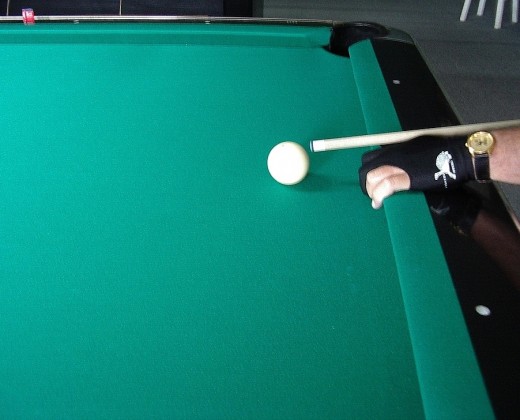
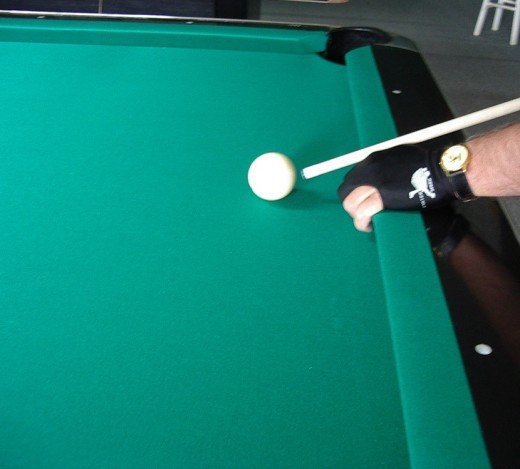
Where to Break from in Pool (8-Ball)
From the left, right or centre? From the head-string or the head cushion?
The only certainty about breaking in a game of pool is that you must break from behind the ‘headline/headstring - Photos 3 and 4.
When I first began playing pool, I was advised to start with the cue ball back near the head of the table and my hand clenched over the cushion to give myself more anchorage before attacking the rack Photo 4. Needless to say I was also told to use a much heavier cue.
My long suffering pool-hall owner sighed when I told him this. ‘From back there, you will tend to grip the cushion too hard and in order to get more energy into the stroke you will forget about keeping your cue level. Before you know where you are you will be standing up and pointing your cue downwards. This will cause the ball to leap up and might possibly cause you to rip open the baize – which is a definite no-no.’ Photos 5 and 6.
‘Remember what I said about ‘speed’ needing to be transferred, not ‘weight’? From back here the cue ball will have slowed down by the time it arrives at the rack. Look at the headline. You can see by the worn parts on the baize – which is there where most players start their break. The sides are most popular, but the centre of the headline is also used. Put it this way, from the head-string, there is no time for the cue ball’s speed to fall off like there would be from further back at the cushion. It’ll still be going full tilt when it smashes its way into the rack. Try it and see.’
As I tried to make half decent breaks, my instructor continued with my education, ‘The basic thing about playing 8-ball is consistency and practice. Keep on breaking.’
Sure, keep on breaking and keep on practicing, but keep an open mind.
I was playing against an expert last week and instead of using his own breaking cue, he hunted the hall for a particular ‘on-site’ cue. I was sure I’d discovered a secret method of breaking. Over the next few games I casually mentioned that the breaking cue must be rather special for him to have searched it out, and not used his own.
“Why was that?” I asked.
“I like the colour,” he answered as he held it up so that I could see the metallic blue shaft.
I’m thinking of taking up tiddlywinks.

